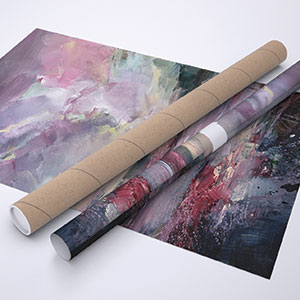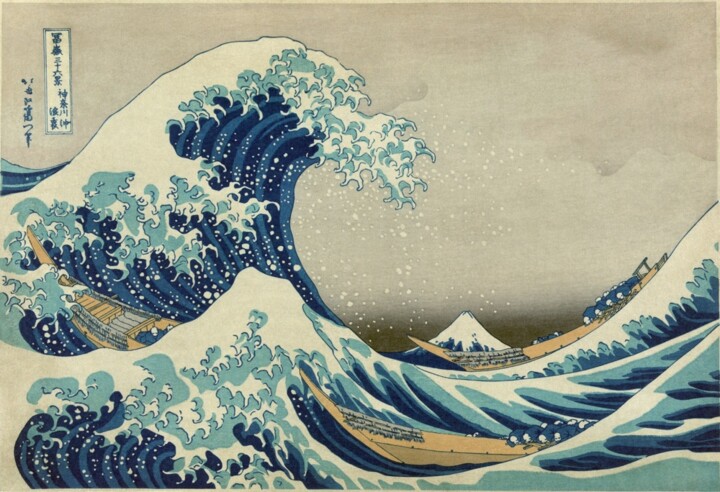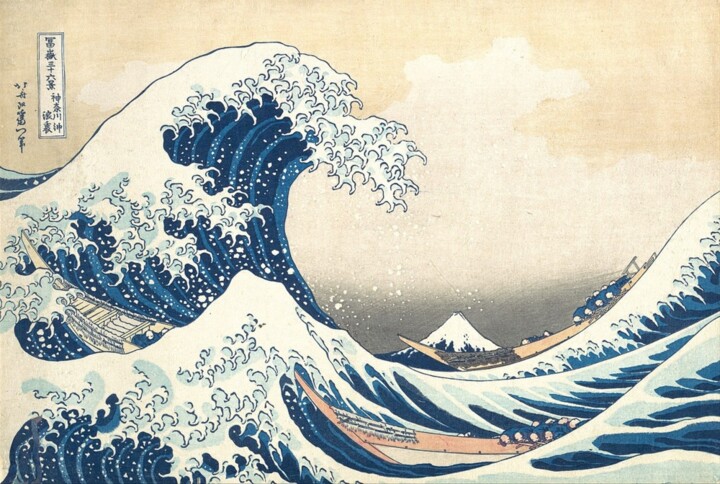"Fine-Arts" prints on paper
It is a process of printing on art paper using very high-quality pigment inks and printed in very high definition. Its level of conservation is exceptional (more than 100 years), its quality, depth, and richness of nuances exceeds the classic photo print on Argentic paper.

Glossy finish
Apart from its exceptional thickness, the fiber paper is composed of an alpha-cellulose base without acid and it is covered with barium sulphate, and a microporous layer absorption enhancing pigments during printing. A pure white color, non-yellowing to light, this paper is especially designed for resistance and aging. It is used by major museums worldwide as it offers excellent resolution, rendering deep and dense colors.
Art Print "Fine Art" - Glossy finish on a fiber base paper 325 g.

Our high end prints and reproductions
ArtMajeur only uses natural papers with neutral pH, resistant, and of high quality, selected from renowned papermakers!
Constant attention is paid by our master printer, whether in terms of color control or respect for the graphic chain. Our high level of quality requirement is a major asset of ArtMajeur framed art prints.
For Artists! You help artists to live from their work. They receive royalties everytime you buy their prints.
About our fine prints-
Original Artwork
Printmaking,
Xylography
- Dimensions Height 7.4in, Width 10.1in
- Framing This artwork is not framed
- Categories Classicism Seascape
Related themes
Katsushika Hokusai was a Japanese artist, ukiyo-e painter, and printmaker who lived during the Edo period (late 18th to early 19th century). Katsushika Hokusai began his artistic career as a woodblock printmaker's apprentice at a young age. Over the course of his lifetime, Hokusai produced a vast body of work, encompassing a wide range of subjects and styles.
One of Hokusai's defining characteristics as an artist was his relentless experimentation and dedication to his craft. He adopted various artistic names throughout his career, each reflecting a new phase of his artistic development. He was known to have created over 30,000 works during his lifetime, including not only prints but also paintings, sketches, and illustrations for books.
Hokusai's "Thirty-Six Views of Mount Fuji" series, created in the early 1830s when he was in his seventies, remains one of his most enduring and celebrated achievements. The series captures the iconic Japanese landmark from different perspectives and in various seasons, showcasing Hokusai's mastery of composition and his ability to evoke a sense of awe and reverence for nature.
In addition to landscapes, Hokusai was also known for his depictions of animals, supernatural creatures, and scenes from Japanese mythology. His meticulous attention to detail and his ability to convey emotion and movement through his brushwork set him apart as a master of his craft.
Hokusai's influence extended far beyond Japan, with his works inspiring countless artists around the world, including Vincent van Gogh, Claude Monet, and Edgar Degas. His innovative approach to composition, use of color, and bold graphic style laid the groundwork for the development of modern art movements such as Impressionism and Art Nouveau.
Despite facing numerous personal and professional challenges throughout his life, including financial hardships and the devastation of the Great Kanto Earthquake in 1923, Hokusai remained dedicated to his art until his death in 1849 at the age of 88. Today, his legacy continues to captivate audiences worldwide, ensuring that his name will be remembered as one of the greatest artists in Japanese history.
-
Nationality:
JAPAN

- Date of birth : unknown date
- Artistic domains: Represented by a Gallery,
- Groups: Contemporary Japanese Artists Artists presented by a gallery






 The Great Wave off Kanagawa sold for $2.8 million sets a new record
The Great Wave off Kanagawa sold for $2.8 million sets a new record
 Katsushika Hokusai
Katsushika Hokusai
 The Great Wave off Kanagawa
The Great Wave off Kanagawa



